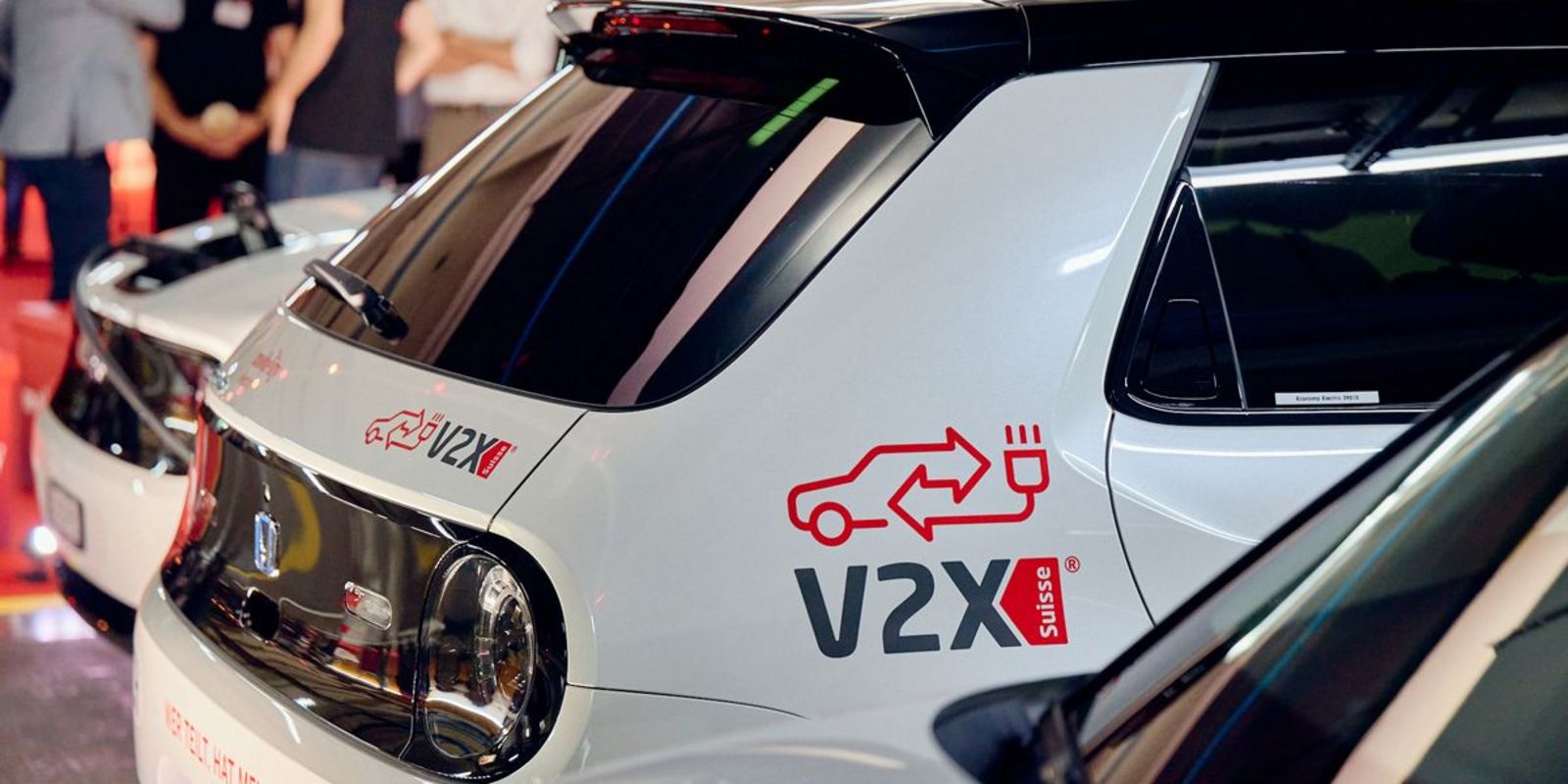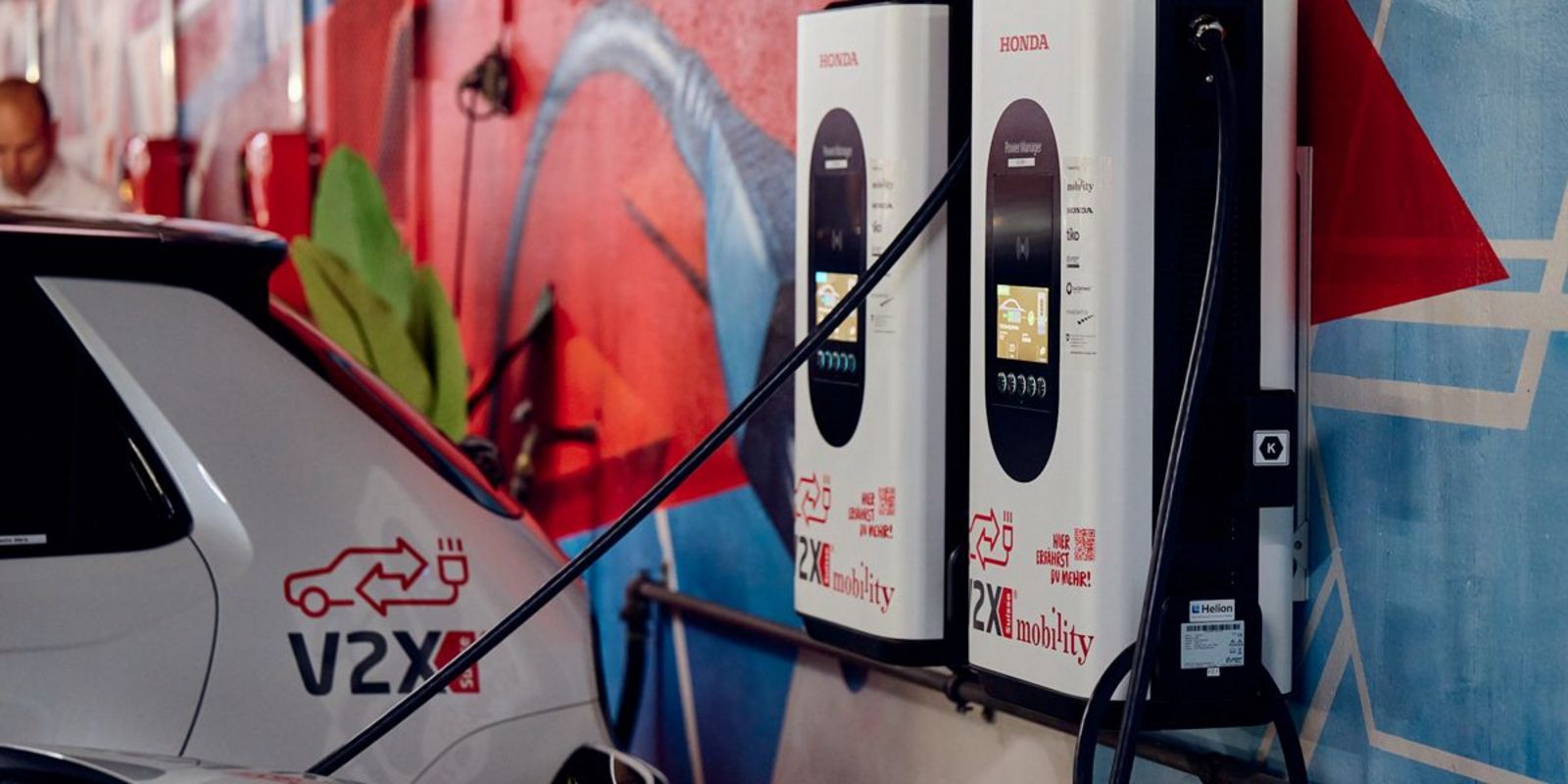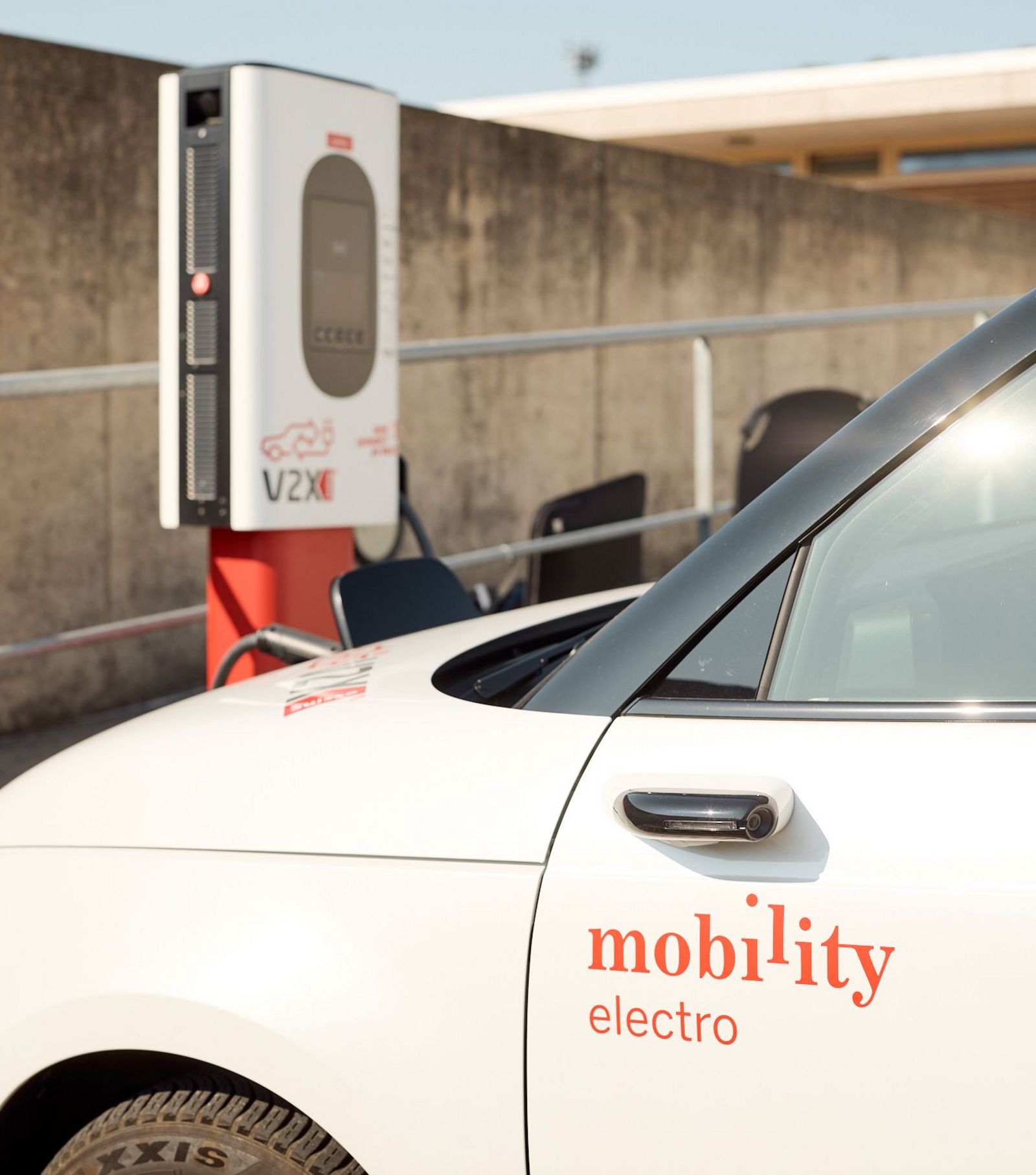At the moment, not a day goes by without reports about the looming energy crisis. As you can imagine, we at Mobility are looking closely at this issue. Ever since our founding, we’ve been searching for innovative and sustainable solutions. In line with this is our goal of electrifying our entire fleet by 2030. Needless to say, we’re well aware that increasing e-mobility is not without its challenges, which is precisely why we’ve launched the V2X Suisse project with strong partners. The basic idea behind the project is that electric cars not only use electricity, but can also return it to the grid when not being driven. The V2X project was officially launched in Bern on 6 September 2022. Read on to find everything you need to know.

What is this about?
The idea behind V2X and bidirectional charging is that electric cars not only use electricity but can also return it to the grid when they aren’t being driven. So essentially, households can draw power from their electric cars during peak hours, and then fully recharge them overnight at a cheaper rate.
How is this supposed to work?
Private cars spend an average of 23 hours a day parked. Thanks to V2X technology, these stationary vehicles become mobile power banks that together represent a large store of energy. They allow distribution grid operators and households to make use of the electricity they contain at peak times. For the car sharing operation, it is of course different, as our vehicles are used more. Thanks to the reservation system, the technology decides when the battery should be charged or discharged. This means that our customers always have enough power on the battery and do not experience any disadvantage.

Why is V2X needed right now?
More and more people are buying electric vehicles in Switzerland. This increase in e-mobility can be seen as a positive trend, but it also boosts the demand for energy. One of the major challenges is how to buffer the energy so that there’s always enough available, especially at peak times. E-cars capable of bidirectional charging can be a smart and cost-effective solution, and they contribute to grid stability. In other words: e-vehicles supporting V2X technology will be part of the solution instead of part of the problem.
Who’s involved in the project?
A project of this size and complexity can only be realised as a team. Mobility is managing the project; alongside it are car manufacturer Honda, software platform sun2wheel, charging station developer EVTEC and aggregator tiko. Novatlantis is on board as scientific adviser. The project is supported under the pilot and demonstration programme run by the Swiss Federal Office of Energy (SFOE).






What makes this project so special?
From September 2022, 50 Honda e all-electric urban cars will be available at around 40 Mobility stations throughout Switzerland for a period of one year. This makes V2X Suisse the first large-scale trial of its kind.
Why is the project such a good fit for Mobility?
Firstly: since its founding in 1997, Mobility has always thought differently and done things differently from others. And secondly: Mobility wants to achieve climate neutrality. That’s why it’s set itself the goal of electrifying its entire fleet by 2030. “Given that context, we’re naturally very interested in new technologies that help us achieve this goal,” says Roland Lötscher The Mobility CEO sees V2X technology as a “huge opportunity” for Mobility.

What is “V2X Suisse”?
The research project ran from autumn 2022 to spring 2024. It involved the integration of 50 fully electric bidirectional Honda model ‘e’ cars into Mobility’s regular car-sharing scheme. It was the first large-scale trial featuring bidirectional charging e-cars to be held in Switzerland. The idea was to explore how this technology can be used to reduce load peaks in the power grid and how households with solar installations can optimise their own consumption. In addition, the aim was to investigate the economic potential of bidirectional vehicles in Switzerland and test the competition between potential flexibility consumers on three grid levels (Swissgrid, distribution grid operator and ZEV – association of electricity producers and consumers).
The final report is due to be published on ARAMIS (the Federal Administration’s research database) in summer 2024. ARAMIS – the Federal Administration’s research database – homepage (admin.ch)
Conclusion: the project has demonstrated the technical feasibility of bidirectional charging and given the technology a boost. It has confirmed that V2H (vehicle-to-home – a proven methodology), and V2G (vehicle-to-grid) work technically, at both the grid level and in terms of benefiting the system as a whole. Such a scheme cannot yet be operated economically by a car sharing company, however.
The following companies were involved in the project in addition to Mobility: Car manufacturer Honda, software developer sun2wheel, charge point developer EVTEC, aggregators tiko, scientific support by novatlantis, in collaboration with ETH. The project is supported under the Swiss Federal Office of Energy’s pilot and demonstration programme.

Comments